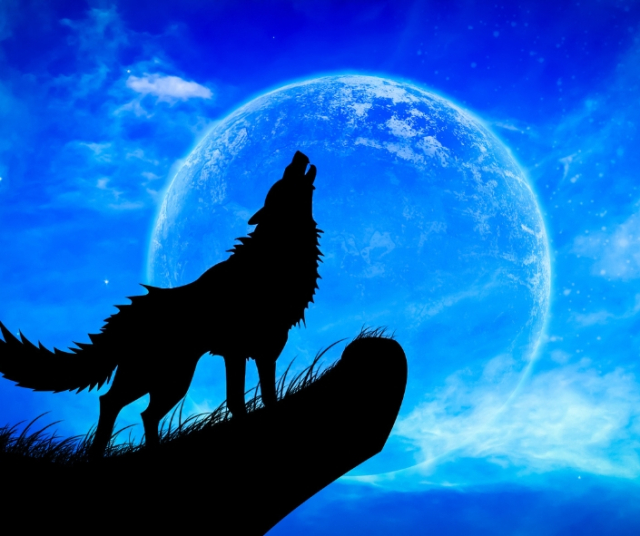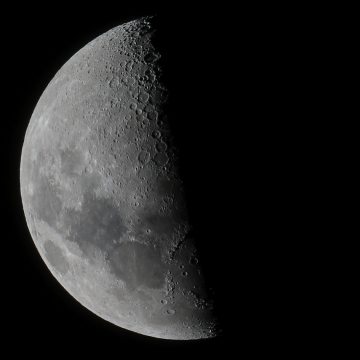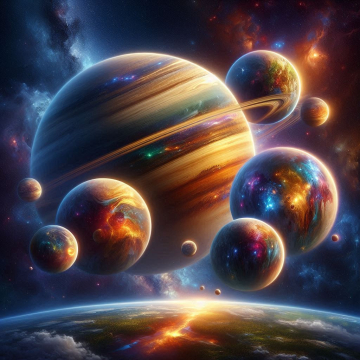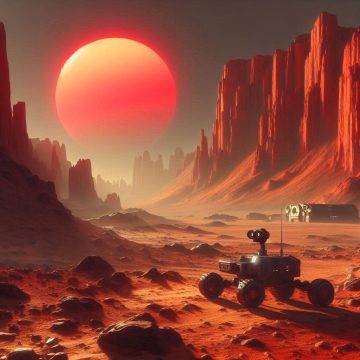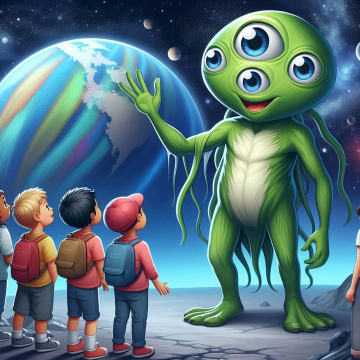The Moon, that bright satellite that illuminates our nights, has fascinated humanity throughout history. However, its influence is not limited to Earth and its human inhabitants; It also has a significant impact on the animal kingdom. In this article, we will explore the mysterious connection between the Moon and animals, examining how its phases, light, and gravitational influence affect behavior, reproduction, and other aspects of wildlife.
The Moon as a Cosmic Force in Nature.
An Ancestral Link.
Since time immemorial, various cultures have observed the relationship between the Moon and life on Earth. Myths, legends and traditions have woven a tapestry of beliefs that highlight the importance of the Moon in nature, including its impact on animals.
Moon Phases and Animal Behavior.
The changing phases of the Moon, from new to full moon, appear to play a crucial role in the activity of many species. Let's analyze how these phases affect animals in different aspects of their daily lives.
New Moon: The Beginning of a Cycle
In the New Moon phase, the illuminated side of the Moon is not visible from Earth. This lunar darkness can affect the activity of certain animals, especially those that depend on light to hunt or avoid predators.
Night Adaptations:
Stalking Predators: Predatory nocturnal animals, such as owls and cats, may find the lunar darkness an advantage in stalking prey without being detected. Their vision adapted to low-light conditions allows them to move stealthily in search of unsuspecting prey.
Predator Avoidance: On the other hand, prey can take advantage of the lunar darkness to minimize the risk of being hunted. The lack of light can serve as a protective veil that makes it difficult for predators to easily identify them.
Reproductive Behavior:
Beginning of Reproductive Cycles: In some species, the New Moon marks the beginning of reproductive cycles. The absence of light can be perceived as a safe time to initiate mating rituals and prepare for raising young.
Amphibians and Aquatic Reproduction: Amphibians such as frogs, which are often associated with the Moon and rain, may initiate their mating calls in this lunar phase. The darkness provides a more intimate environment for these rituals that often involve distinctive vocalizations.
Crescent Quarter: Lighting the Path.
As the Moon moves into its First Quarter phase, an increasing portion of its surface illuminates, offering increasing light at night. This gradual increase in luminosity can have various implications for animal behavior.
Navigation and Orientation:
Migratory Birds: For migratory birds that travel at night, the First Quarter can be a beacon in the night sky. Moonlight provides reference points that facilitate navigation during long migratory journeys.
Nocturnal Navigating Animals: Animals like bats, which rely on echolocation, can use lunar light to navigate their environment. Although they do not see in the dark, the brightness allows them to detect obstacles and prey more clearly.
Cardiac rhtyms:
Active Nocturnal Animals: The gradual increase in lunar light can synchronize the circadian rhythms of nocturnal animals, signaling the time to go out in search of food or carry out other nocturnal activities. This synchronization is crucial to maintaining balance in ecosystems.
Waxing Gibbous: Increasing Light, Intense Night Activity
In the Waxing Gibbous phase, most of the Moon is illuminated, providing more intense light compared to previous phases. This luminosity can trigger more intense nocturnal activity in several species.
Increased Night Hunting:
Efficient Predators: Nocturnal predators, such as feral cats and coyotes, can take advantage of the intensity of moonlight to hunt more effectively. Their enhanced vision in these conditions allows them to detect prey and hunt with greater precision.
Prey in a State of Alert: On the other hand, prey must remain in a constant state of alert during the Waxing Gibbous, since the luminosity makes them more visible to predators. This increase in activity can affect the sleeping and behavioral patterns of prey.
Courtship and Mating:
Mating Rituals: Some bird species perform more elaborate mating rituals under the intense light of the Crescent Gibbous. Courtship colors and behaviors can be more vibrant and visible, increasing the chances of attracting a mate.
Full Moon: Night Splendor
The Full Moon, in its full glow, has captured the imagination of humanity throughout history. In the animal kingdom, this lunar phase also has a notable impact on various behaviors.
Intensified Nocturnal Behaviors:
Nocturnal Howling: Wolves and coyotes, known for their howling, often exhibit these behaviors most intensely during the Full Moon. There has been speculation about a possible connection between lunar luminosity and the increase in vocal communication of these species.
Nocturnal Insect Activity: Nocturnal insects, such as moths and beetles, may be more active during the Full Moon. Additional light can increase the efficiency of foraging and reproduction.
Marine Navigation:
Coral Spawning: In marine environments, the Full Moon is associated with coral spawning events. The synchronization of this phenomenon with the lunar phase allows a massive release of gametes, increasing the chances of fertilization and survival.
Waning Gibbous and First Quarter: Gradual Changes
As the Moon progresses into its Waning Gibbous and First Quarter phases, the luminosity gradually decreases. This change may have specific repercussions on animal behavior.
Decrease in Night Activity:
Less Effective Predators: Decreased moonlight can make nocturnal predators less effective at hunting. Some species can adjust their activity patterns to compensate for reduced visibility.
Less Vulnerable Prey: As luminosity decreases, prey may feel less vulnerable to night hunting. This may allow them to explore more open areas and forage in a less restricted manner.
Black Moon: Night Darkness.
The Black Moon is an unusual phase that occurs when there is no illuminated portion visible from Earth. Although the Moon is present in the sky, its lack of luminosity can influence animal behavior in unique ways.
Dark Adaptations:
Specialized Nocturnal Species: Animals that have evolved for extreme nocturnal life may be better adapted to the darkness of the Dark Moon. Their anatomy and acute senses allow them to function efficiently in low light conditions.
Silence at Night: Compared to brighter lunar phases, the Black Moon may be associated with a decrease in the vocal activity of certain animals. Silence may be a strategy to avoid detection by predators.
The relationship between the Moon and animals is a multifaceted phenomenon that ranges from nocturnal hunting to reproduction and migration. As we explore this enduring cosmic link, it becomes clear that the Moon is not only a presence in the night sky, but also a force that shapes life on Earth in surprising and diverse ways. Recognizing and understanding this connection invites us to appreciate the complexity and interconnectedness of nature, underscoring the importance of preserving harmony between the cosmos and the animal kingdom.
